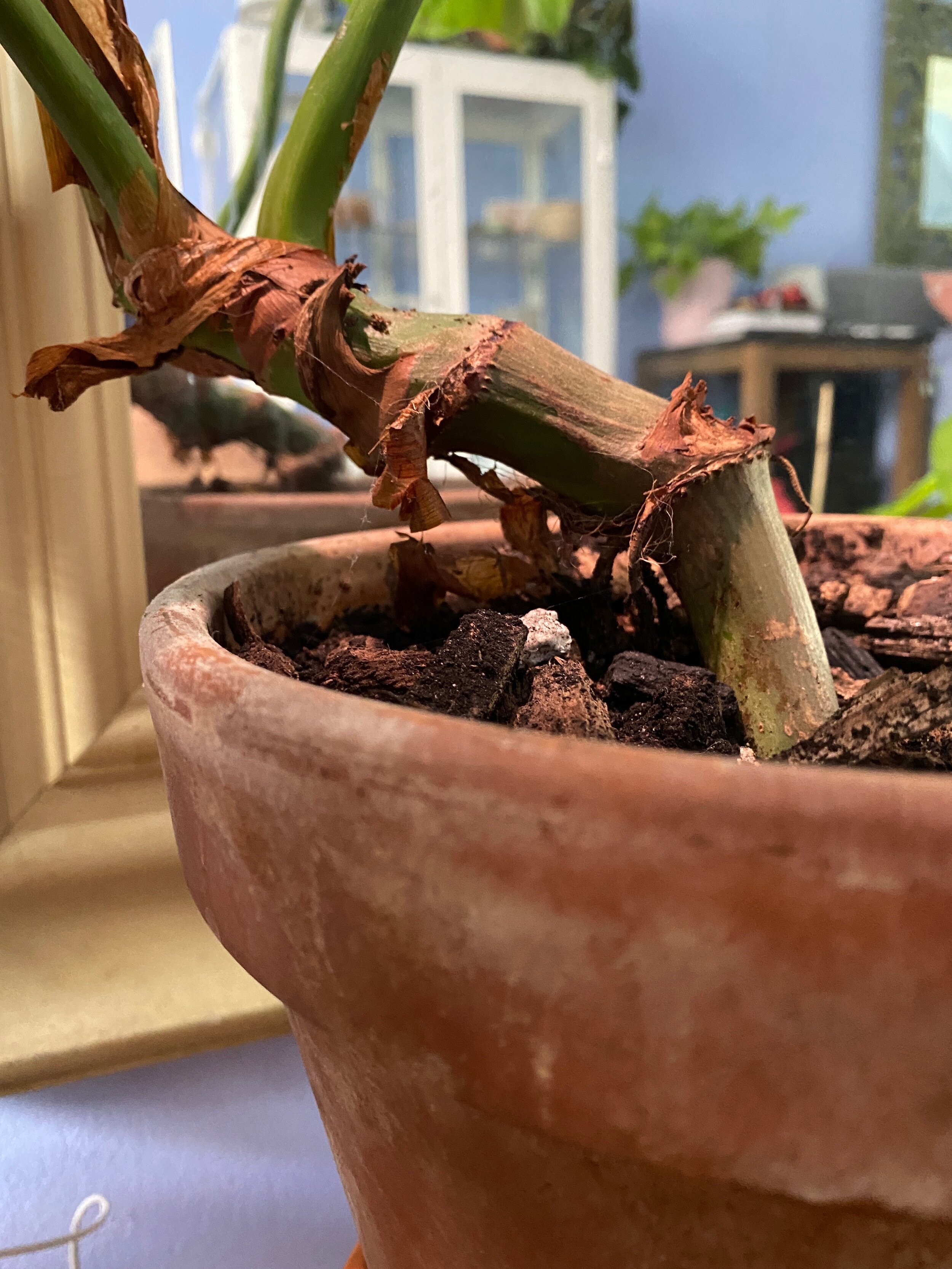The Care and Keeping of Stolons.
sto•lon stō′lŏn″, -lən►
n.
A long thin stem that usually grows horizontally along the ground and produces roots and shoots at widely spaced nodes
The American Heritage® Dictionary of the English Language, 5th Edition.
Many of us have heard of Philodendrons pastazanum, mamei, and especially gloriosum. I have always found these Philodendrons fascinating due to their interesting growth habit. Though in some cases they can be epiphytic, they are otherwise known as creeping Philodendrons. My first creeping Philodendron was pastazanum. I was fortunate enough to have a very experienced plant friend, Gina, who talked me through the mystery of stolons. I haven’t purchased a stolon-bound plant in a while, but I did happen to watch a video in which a Philodendron Mamei was mounted to a climbing pole, and it occured to me that others might be as confused as I was before I had the good fortune of Gina’s infinate plant knowledge. Though I haven’t spoken to her this summer, I have spoken to a few stolons, four, in fact. I thought I’d share some experiences with the hope that the knowledge imparted to me can be of some benefit to someone out there who’s about to mount a stolon to a pole.
First of All, What is it?
Well, as The American Heritage Dictionary of the English Language so succintly declares, a stolon is a stem. Maybe my own terminology isn’t anatomically correct, per se, but I like to think of a stolon like a terrestrial vine. That’s to say, rather than growing up and popping epiphytic roots out along nodes, a stolon grows horizontally and produces roots shooting downward like the legs of a centepede. It’s an odd description, but I see a big round body and roots hanging down and it reminds me of a bug with many legs. But that’s not all. Shooting up from the stolon are the lovely leaves of our favorite creeping Philodendrons. Shoots can emerge at any point along the stolon, though there is a defined growth point at the tip. See below for new growth emerging along the stolon of my Philodendron Gloriosum.
A stolon typically originates under the soil in the wild and then begins the journey along the ground. These Philodendrons can be found creeping in the understories of South America, creating a hedge-like appearance as they fill out and produce more shoots with age and maturity. Should the stolon be severed at any point, it’s equipped to forge out on its own, sprouting a new growth tip and creeping along slowly as it produces new foliage. The stolons can traverse varied landscapes. Some move along the understory as noted above, but others will creep over rocks or stumps, along creekbeds, or even trail over the edge of a pot if it runs out of terrain. The latter is not ideal, however, as the stolon is healthiest when roots make contact with soil or potting mix. It can be painful for a plant parent to chop a healthy plant and wait for a new growth point to emerge. Another option is to pot up.
Also Fun:
That description is specific to creeping Philodendrons, but the ever-popular Strawberry plant also spreads with the help of stolons. Rather than centepede legs, the stolon has clusters of roots at greater distances with a piece of green stem hovering over the ground between root clusters. The stolons allow the Strawberry plant to spread quickly and cover more ground. It’s an effective way to grow.
Planting a Stolon
The growth habit of these plants is hedge-like - long with a shallow root system, though the depth of the roots can be variable. The ideal potting choice would then be, of course, long and shallow. Going too short will require you to eventualy cut your plant or repot it into a longer vessel. Going too deep will leave soil damp for longer than desired, risking the health of the roots. Azalea pots are nice choices, as well as rectangular “window sill” style planters. Ideally, the cut end of the stolon should be placed very close to the pot, leaving the growth tip room to do its thing. If you choose a longer pot, it might look odd at first to have your plant off center, but think how gorgeous it will look once it’s fully grown across the distance. Occasionally, you might recieve an oddly shaped stolon, as I did with my P. pastazanum. The aforementioed expert walked me through the potting of this one, and we’ve been growing slowly but steadily ever since. The stolon was shaped like an “L” which can happen when the plant grows over the edge of the pot. Note that there are no roots emerging from the bottom of the P. Pastazanum’s stolon.
Sometimes you just don’t know what’s going to show up at your door when ordering plants online, but we make it work. This pastazanum will be repotted next spring into something wider, hopefully allowing the stolon to make contact with the soil and inspire some more root growth.
What’s your stolon story? E-mail me here or chat with me on Instagram!



